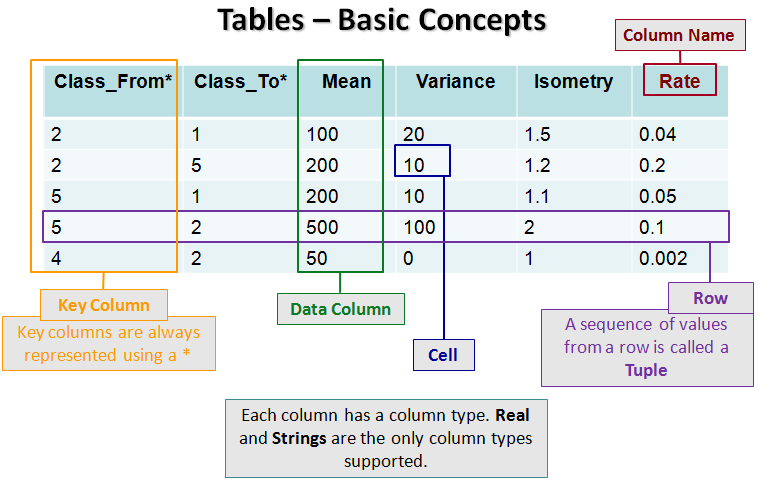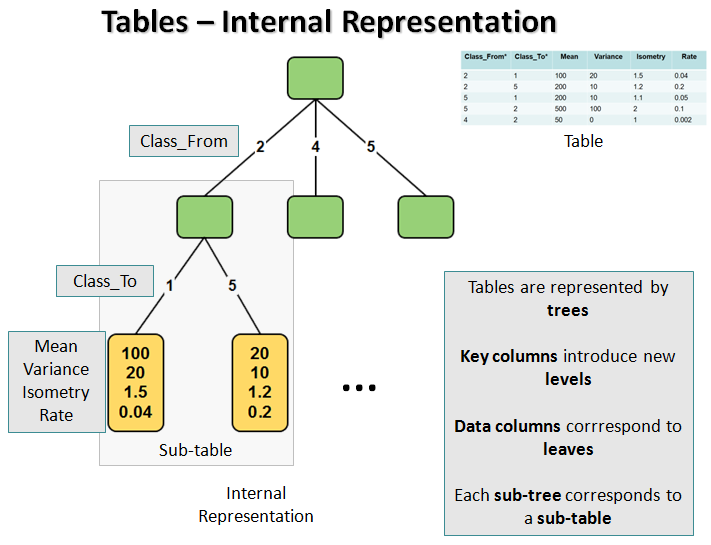Table of Contents
Table Type
A table is a collection of tuples organized in a special way, where each tuple may be formed by several keys and values. The set of keys in each row must be unique.


The set of all elements at the same position in all rows defines a column. All columns must have a unique name. The names must follow the general name convention in Dinamica EGO, they must start with a “_” or a letter and must be formed by letters, numbers and underscores. Blanks in names are automatically replaced by “_” (underscore).
Keys and values can be represented using double precision floating point numbers, allowing the definition of integral and fractional values, or strings.
Internally, tables are represented using trees.

When stored as Comma-separated_values files, tables may also use the column name/type syntax to represent the column attributes — the name, the indication whether it is key or data/value column, and its data type.
GUI Editor

EGO Script
Tables are sequences of elements enclosed by [ ]. The keys/values are represented by real values or strings. The first line of the sequence specifies the column names. Column names suffixed by “*” represent keys.
[ "From*", "To*", "Rate", 1, 2, 0.4, 1, 4, 0.2, 2, 7, 0.5, 4, 8, 0.2 ]
The type of each columns is inferred inspecting the column elements. Elements representing strings can be surrounded by double quotes '“'.
[ "Categories*", "Name", "Color_Red", "Color_Green", "Color_Blue", 1, "soy", 20, 45, 125, 2, "rice", 20, 100, 125, 7, "coffee", 200, 45, 125, 12, "sugar_cane", 75, 45, 123, 34, "bean", 20, 45, 57, ]
The table below represents the table above without the use of double quotes.
[ Categories*, Name, Color_Red, Color_Green, Color_Blue, 1, soy, 20, 45, 125, 2, rice, 20, 100, 125, 7, coffee, 200, 45, 125, 12, sugar_cane, 75, 45, 123, 34, bean, 20, 45, 57, ]
Empty tables must provide the column types explicitly.
[ "From*#real", "To*#real", "Variable_Name*#string", "Upper_Range*#real", "Weight_Coefficient#real" ]
However, it is possible to omit the column type if the column type is “Real”. So, it is legal to redefine the previous table as the following:
[ "From*", "To*", "Variable_Name*#string", "Upper_Range*", "Weight_Coefficient" ]